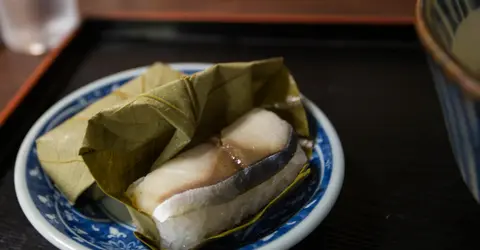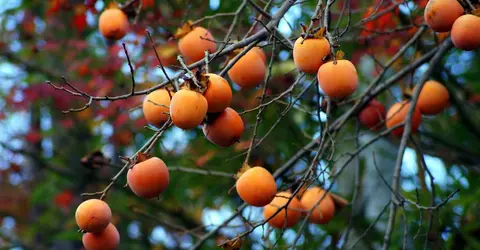Nara's kakinoha-zushi 奈良の柿の葉寿司
Sushi like no other
Deer aren't the only cultural feature of Nara, which has much more to offer than just these kawaii animals. Relatively unknown outside Japan, this sushi from Nara is a culinary marvel!

Kakinoha-zushi, sushi wrapped in a persimmon leaf
The kakinoha-zushi of Nara is a bit unusual. In fact, it's difficult at first to recognize them as sushi: their peculiarity is that they're camouflaged in a persimmon leaf. But why?
Hidden sushi
Nara is far from being a port city: deep in inland Kansai, seafood took a while to be transported there during the Edo era (1603-1868). This was reflected in the taste and quality of the fish - preserved in rice, salt and sometimes even vinegar, the fish arrived too salty and inedible. This is where the persimmon leaf comes in: it's used to wrap the sushi and maintain the taste. And in addition to its role of conservation, it also has anti-bacterial properties! Perfection in a leaf! It's not edible however, and is only intended to pack and protect the sushi. However, it infuses it with its slightly sweet aroma.
Read : Kansai culinary specialties
Khaki sushi
Thus, kakinoha-zushi , which literally means "sushi with persimmon leaf", is a marriage between the sea (the fish), the mountains (the persimmon leaf) and the land (the rice), which makes for an exceptional meal. Traditionally, kakinoha-zushi are made with salmon or mackerel but you can now also find shrimp or eel. They are delicately wrapped in a persimmon leaf, and presented in a wooden box. It's difficult for non-specialists to notice the difference in flavor compared with traditional sushi because it is particularly subtle. To put the odds on your side, opt for the mackerel (saba) kakinoha-zushi , a white fish that is more easily absorbed by the delicate aroma of persimmon leaf.
Read also : The job of sushi chef in Japan

Japanese persimmons
















